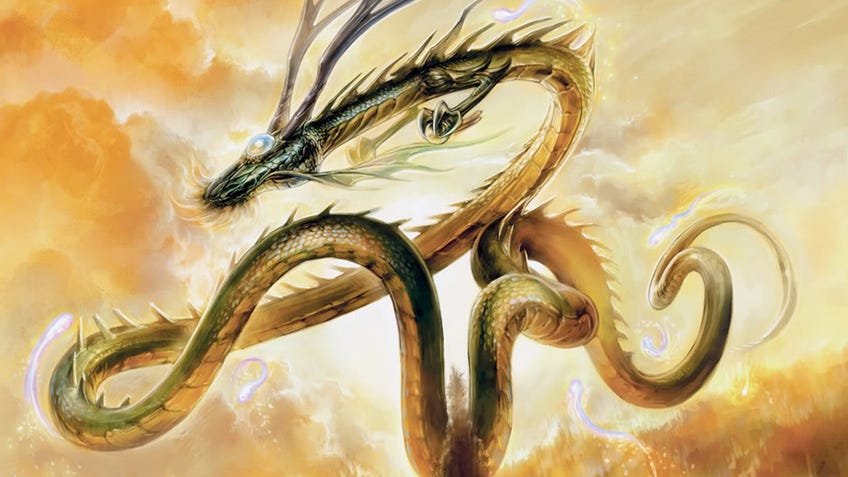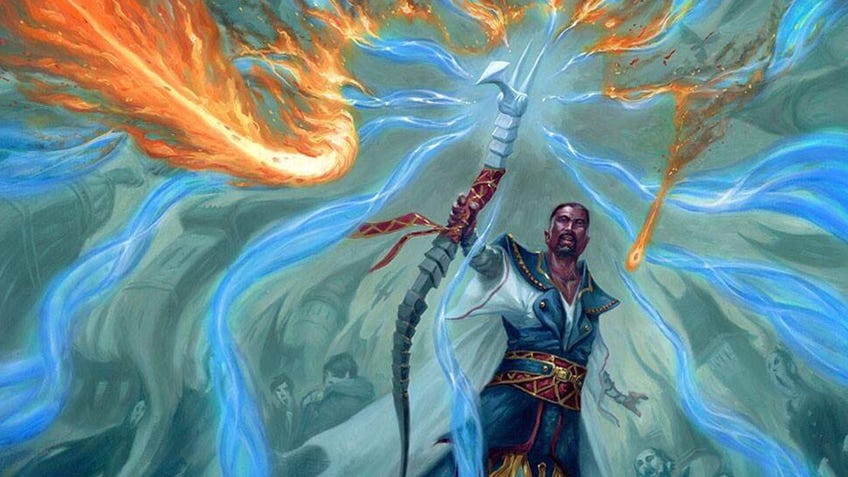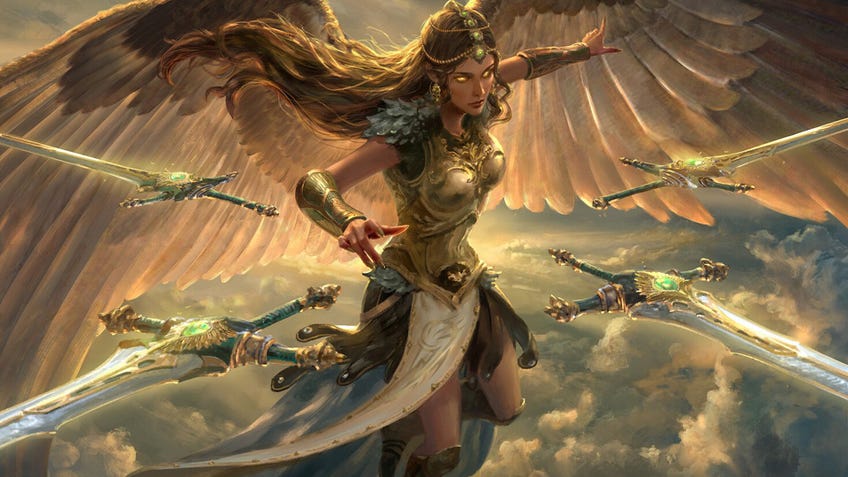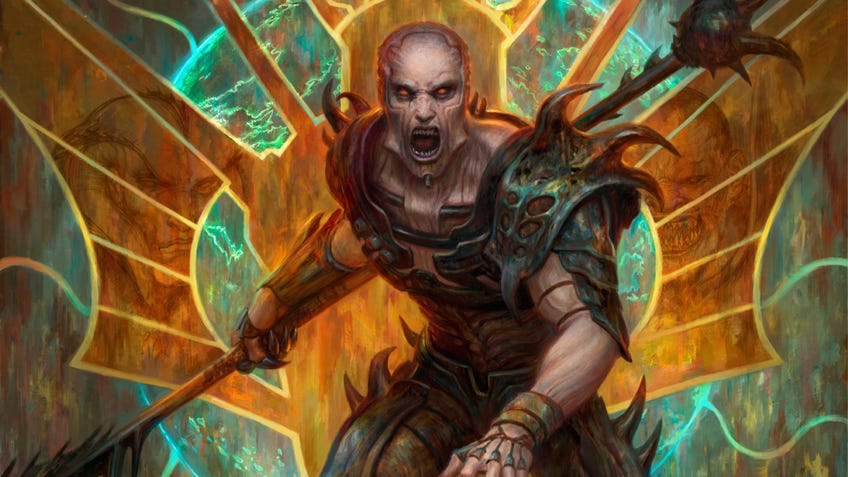Magic: The Gathering deck types explained
How to build and play Aggro, Midrange, Control and Combo decks.
Once you’ve learned the basics of how to play Magic: The Gathering, you’ll probably start looking at different types of decks for the trading card game. While learning how to build a Magic: The Gathering deck is a skill in and of itself, it helps to understand the four main MTG deck archetypes, if only so you can start considering which ones you enjoy, which ones you dislike and which ones you’d like to throw into a furnace.
Despite the vast library of cards in the game, the wealth of popular Magic: The Gathering formats and all of the possible things that could affect a deck, there are only four main deck archetypes to consider. They all play a very different role and understanding which one your deck fits into can help your skill level with that deck rise considerably by figuring out what kind of a game plan you have.
What are the Magic: The Gathering deck archetypes?
There are four main archetypes when it comes to MTG decks. It’s essential to have a rough idea of what each one does as it’ll help you identify them when playing against them. This, in turn, will let you plan ahead when it comes to how to play your deck as well as sideboarding - which is where you move cards from your sideboard deck to your main deck in-between matches to try and give yourself an advantage.
It’s also important to note that some decks blur the lines between these styles, which allows them to be a little more resilient, but not necessarily as efficient. On top of that, some decks are built to have a transformational sideboard, which could take a Midrange deck and turn it into a Control deck. For example, you might take out some counterspells in favour of some powerful creatures. This is a great way to keep your opponents on their toes, though it can be hard to do without a particularly good idea of when to do so.
Aggro

If your idea of a good game of Magic: The Gathering involves pummelling your opponent before they have a chance to react, then the chances are that you’ll want to play an Aggro deck.
Aggro decks have a high-density of low-cost cards and a single-minded approach to each game: deal damage quickly. You’re not worried about having a significant threat because you don’t need more than two or three mana to win anyway. (If you need reminding: what do the different Magic: The Gathering mana colours mean?) That’s not to say that playing these decks is simple - more often than not, they’re full of tiny little decisions that will be the difference between victory and defeat. Then again, sometimes you just need to throw as much damage at your opponent as you can.
A lot of Aggro decks are focused on Red rather than any other colour. Perhaps the most quintessential Aggro deck is Burn, which is one you can find in both Modern and Legacy, and features small creatures with Haste and a wealth of spells that deal damage directly to your opponent’s life total. They’re a good choice if you like to keep things simple for yourself and prefer to end a match in a couple of minutes. They tend to lose to Midrange decks but have solid matchups against Control decks.
Midrange

Midrange decks are for those who like to be a little more flexible. Each and every card should be feared in a Midrange deck, and if even a single threat stays alive, it can usually end a game. The aim is to simply have better cards than your opponent, and ideally ones that continuously generate value of some sort. The goal is to simply keep playing obnoxiously strong cards until your opponent can no longer answer them, and then you can simply ride to victory.
Most Midrange decks have multiple colours, but due to the sheer power of Green and its creatures, will tend to have a strong foundation there. The best example of a Midrange deck is probably Jund in Modern, which is packed full of rares and mythics that either a) generate value every turn or b) are low mana cost with a large effect. Midrange tends to stomp on Aggro decks but can struggle against Control.
Control

If you’d rather just stop your opponent’s game plan in a MTG match, then the Control deck type is where you want to be. The early game for a Control deck is all about disrupting and ruining the opposing attempt at playing Magic: The Gathering. Sometimes this is a matter of making them discard their key cards, other times this is countering their spells and killing their creatures. Eventually, you’ll decide to go on the offensive and take your enemy down. Still, it’s usually long after they’ve accepted their fate and are merely waiting for the sweet release of defeat.
You’ll nearly always be playing in Blue if you’re piloting a Control deck. Of course, you could also be using any other combination of colours, though it’s highly unlikely that you’ll be playing Green. Azorius Control is a very powerful deck in nearly every format. If you were to look for one single MTG card that embodied the Control way of life, you could probably stop with planeswalker Teferi, Hero of Dominaria. Control does well against Midrange but often finds itself too slow to defeat Aggro.
Combo

You’ll notice I haven’t mentioned Combo in any of the other Magic: The Gathering deck archetypes, and that’s because Combo decks are the wildcards. (Pun very much intended.) Unlike every other MTG deck type, Combo decks tend to be a law unto themselves. The only thing that ties them all together is that they specialise in winning seemingly out of nowhere. As a result, they rely on having a single game plan that is put before everything else. This often means forgoing any kind of protection in the first game, in favour of trying to win on turn two or three.
Combo decks come in all shapes, sizes, colours and styles. The classic examples in Modern would be Storm, which is a deck that plays as many cheap spells as possible in one turn before killing the opponent with a single spell. It’s fascinating to watch, challenging to get right and incredibly frustrating to be up against.
Nevertheless, Combo is an excellent deck archetype for those who like to master a single skill. The weaknesses and strengths of this style are entirely based on what kind of combo it’s trying to pull off. You’ll have to learn about it based on which combo you go for.

